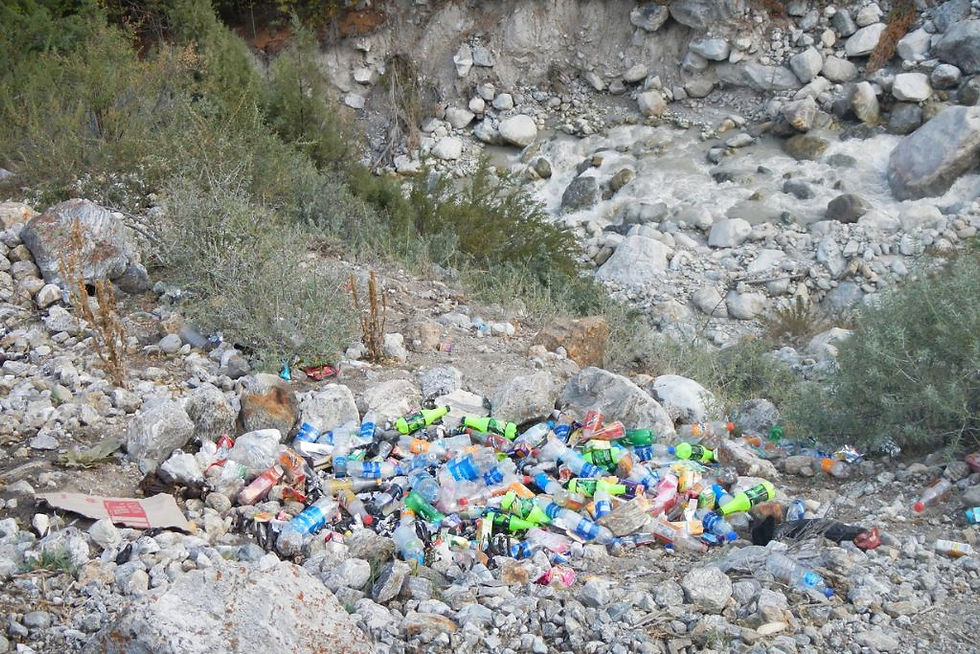The Kunming-Montreal Global Biodiversity Framework, Explained
- Constant Tedder
- Aug 10, 2023
- 4 min read
On December 18, 2022, the 15th Conference of Parties (COP15) dedicated to the UN Convention on Biological Diversity achieved a historical feat in biodiversity conservation, with more than 190 countries adopting the historic Kunming-Montreal Global Biodiversity Framework.
—
What Is the Kunming-Montreal Global Biodiversity Framework?
Dubbed a “Paris moment for biodiversity,” the high expectations of the biodiversity framework mirror that of the 2015 Paris Agreement as they are both projected as pivotal agreements in global climate action.
While the Paris Agreement focused on limiting global warming to 1.5C-2C, the Kunming-Montreal Global Biodiversity Framework was implemented to safeguard global biodiversity, which has been dwindling at an alarming rate.
According to World Wildlife Fund’s 2020 Living Planet Report, there has been a global average loss of 69% in mammal, bird, fish, reptile, and amphibian species since 1970. The steep loss is largely due to man-made habitat destruction from unsustainable agricultural activities.
With 23 elaborate goals to be achieved by 2030, the UN Environment Programme (UNEP) states that this biodiversity framework aims to “halt and reverse nature loss.”
“The agreement represents a major milestone for the conservation of our natural world,” said the director general of WWF International, Marco Lambertini. “And biodiversity has never been so high on the political and business agenda.”
You might also like: Did COP15 Succeed or Fail?
The Main Goals of the Biodiversity Framework
One of the most notable takeaways of the framework is the 30×30 goal, which requires at least 30% of terrestrial, inland water, and of coastal and marine areas “effectively conserved” or otherwise restored from degraded states by 2030.
This framework is indeed ambitious in contrast with the previous biodiversity agreement, the 2010 Aichi Biodiversity Targets. The latter agreement had 20 goals surrounding biodiversity protection, including protecting 17% of land and 10% of oceans by 2020. Unfortunately, none of the Aichi targets were accomplished.
The Kunming-Montreal Global Biodiversity Framework also recognises the roles of indigenous communities when it comes to biodiversity conservation.
Posed at Target 1, the framework emphasises the goal of reducing the loss of areas that are heavily linked to high biodiversity concentrations close to zero by the end of the current decade. Most importantly, it states that this will be done while “respecting the rights of indigenous peoples and local communities.”
Indigenous people have long suffered from environmental conservation laws that overlook and dismiss their contributions to environmental protection. The Stockholm Conference of 1972, designed to address environmental issues in the modern age, failed to acknowledge the rights of indigenous people. In 2014, the UN Human Rights Office of the High Commissioner (OHCHR) published a press release condemning the deletion of indigenous people from final drafts of UN Sustainable Development Goals.
Indigenous communities are essential in carrying out solutions for ecosystems, since their traditional knowledge is useful when it comes to assessing the environment for proper and sustainable ecosystem management. By properly addressing them in global conferences, their rights and identities are officially recognised. In turn, they can continue to fine-tune their environmental conservation practices freely.
You might also like: Indigenous People Are Essential for Preventing Biodiversity Loss. They Mustn’t Be Sidelined.
Another key feature of the Kunming-Montreal Global Biodiversity Framework is the acknowledgement of the financial impacts on global biodiversity. Depending on where the finances are invested, the efforts for ecological conservation could either be hindered or heightened.
The framework suggests that incentives and subsidies that are harmful for biodiversity will be eliminated, phased out or reformed by 2050. Meanwhile, starting with the most harmful incentives, the money allocated to them will be sliced by at least US$ 500 billion per year by 2030.
Aside from limiting budgets that harm the environment, more financial investments will go to conservation strategies. The total global biodiversity-related financial resources will need to reach at least US$20 billion per year by 2025, and to at least $30 billion per year by 2030.
The financial discussion poses as a monumental message that biodiversity loss is a new, imminent risk for asset managers, as the finance industry is pushed to be transparent about their biodiversity footprint.
How Will the Goals Be Pursued?
The biodiversity framework enforces high hopes for future biodiversity conservation but whether it can be properly implemented has been a question left hanging over the past few months.
The Global Environment Facility (GEF) was tasked to collect required funding for the framework, leading to the establishment of a new trust fund – the Global Biodiversity Framework Fund (GBF).
According to GEF, the participating countries will translate the framework into national strategies. This would mainly require the allocation of adequate funding, especially for developing countries, which are also those with the richest biodiversities on earth.
On June 26, 2023, the GEF published a press release stating its provision of $1.4 billion to support 136 countries, particularly developing ones, in protecting their species and habitat loss, which is in line with the Kunming-Montreal Global Biodiversity Framework. Furthermore, the GEF plans to collect another $9.1 billion for additional financial support.
While the Kunming-Montreal Global Biodiversity Framework sounds extremely promising, it highly relies on sufficient financial aid for developing countries since they house most of the biodiverse areas. In order to fully implement the framework, the circulation of financial aid from developed countries to developing countries is essential. After all, a rich biodiversity is not only a national asset for developing regions but an international asset for all.
Featured image: UN Biodiversity/Flickr
You might also like: The Remarkable Benefits of Biodiversity




Comments